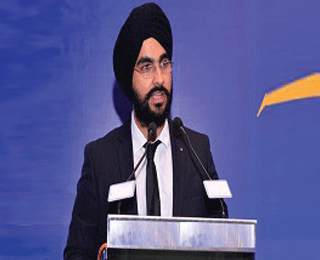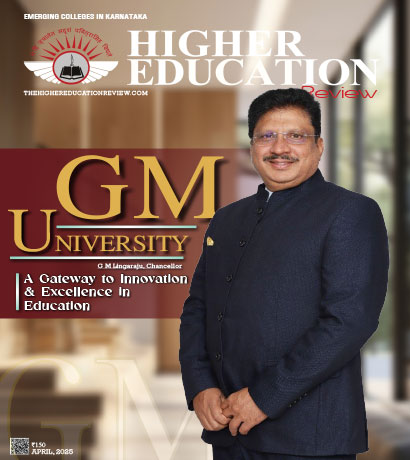How Iot Is Transforming Higher Education For The Better

Saradar Simarpreet Singh, Director JIS Group
Technology will have a significant impact on education in the upcoming years. The Internet of Things (IoT) is reaffirming its critical role in the context of information and communication technologies and societal advancement. Institutions may improve learning outcomes with the use of IoT by offering more opulent learning opportunities, increasing operational effectiveness, and collecting real-time, actionable insight into student performance. The goal of this research is to determine the potential of IoT in higher education and how to maximise its advantages while minimising its risks. For IoT systems and technologies to reach their full potential, further work is required. As a result, this essay presents research on how the Internet of Things has affected universities in particular.
IoT in education is primed to be a game changer as more educational institutions adopts connected smart devices to supplement the existing e-Learning and smart board infrastructure. The rising popularity of IoT connected devices is largely due to the simplicity and low cost of cloud services. Apps that are highly specialized and designed to the specifications of educational institutions can be created fast. It has never been simpler or more affordable to save, analyse, and access data thanks to the unlimited storage and pay as you go facilities. intelligent pupil tracking software, Personalized instruction, IoTenabled smart boards and new textbooks, AI-powered research, assistance for students with particular needs improved security in classrooms, Classrooms that are smart and networked, task-based learning.
The use of IoT technology in Higher Education can help to Improve a Range of Processes:
• Improved Campus Management: IoT can be used to monitor and manage various aspects of a campus, such as energy consumption, building maintenance, and security. This can help to improve efficiency and reduce costs, as well as enhance the overall student experience.
• Enhanced Student Services: IoT can be used to provide real-time information and services to students, such as class schedules, resource availability, and access to campus facilities. This can help to improve the student experience and make it easier for students to access the resources they need.
• Enhanced Teaching & Learning: IoT can be used to support interactive and immersive teaching and learning experiences, such as through the use of virtual and augmented reality. This can help to increase student engagement and improve the effectiveness of instruction.
• Improved Research: IoT can be used to support research by enabling the collection and analysis of large amounts of data from a variety of sources. This can help to accelerate the pace of research and support new discoveries.
"IoT in education is primed to be a game changer as more educational institutions adopts connected smart devices to supplement the existing e-Learning and smart board infrastructure"
Introduction to IoT Operated Devices:
Devices that compute, are networked, and interact with the environment with the goal of gathering sensory input and/or modifying the local environment make up the Internet of Things. For instance: A Fit Bit can compute, connect to networks, and communicate with the outside world (i.e., collects data from the Fit Bit wearer). Industrial smart grid metres can calculate, connect to networks, and communicate with the outside world (i.e., collects power data).
The Array of Things in Chicago consists of computing, networked, and environment-interacting devices (i.e., collect many environmental data points).
Blood glucose monitors are networked, compute, and engage with their surroundings (i.e., collect data from the user).
The Role of IoT: Unlocking New Opportunities for Growth and Success
The Internet of Things (IoT) has the potential to bring significant benefits to higher education by improving various processes and enhancing the overall student experience. IoT can be used to monitor and manage various aspects of a campus, such as energy consumption, building maintenance, and security. This can help to improve efficiency and reduce costs. In order to enhance student services, IoT can be used to provide real-time information and services to students, such as class schedules, resource availability, and access to campus facilities. This can help to improve the student experience and make it easier for students to access the resources they need. IoT improves teaching and learning by supporting interactive and immersive teaching and learning experiences, such as through the use of virtual and augmented reality.
This can help to increase student engagement and improve the effectiveness of instruction. IoT can be used to support research by enabling the collection and analysis of large amounts of data from a variety of sources. This can help to accelerate the pace of research and support new discoveries. IoT information enables teachers to give better instruction. They have access to information about the effectiveness of their tactics, the viewpoint of their students, and other facets of their performance. IoT relieves them of management and administrative responsibilities so they may concentrate on their mission. It automates manual and administrative tasks and makes supervision easier with tools like system flags or controls to keep students interested.
In conclusion, the Internet of Things (IoT) has the potential to transform higher education by improving various processes and enhancing the overall student experience. IoT can be used to improve campus management, enhance student services, improve teaching and learning, and accelerate research. However, the adoption of IoT in higher education also comes with its own set of challenges, such as cost, integration, security, privacy, and regulation. Higher education institutions must carefully consider these challenges when implementing IoT technology and ensure that they have appropriate safeguards in place to address them.
Saradar Simarpreet Singh, Director
Simarpreet pursued his Bachelor’s Degree of commerce in St. Xaviers College, Kolkata and has over nine years of experience in Administration and Finance.
IoT in education is primed to be a game changer as more educational institutions adopts connected smart devices to supplement the existing e-Learning and smart board infrastructure. The rising popularity of IoT connected devices is largely due to the simplicity and low cost of cloud services. Apps that are highly specialized and designed to the specifications of educational institutions can be created fast. It has never been simpler or more affordable to save, analyse, and access data thanks to the unlimited storage and pay as you go facilities. intelligent pupil tracking software, Personalized instruction, IoTenabled smart boards and new textbooks, AI-powered research, assistance for students with particular needs improved security in classrooms, Classrooms that are smart and networked, task-based learning.
The use of IoT technology in Higher Education can help to Improve a Range of Processes:
• Improved Campus Management: IoT can be used to monitor and manage various aspects of a campus, such as energy consumption, building maintenance, and security. This can help to improve efficiency and reduce costs, as well as enhance the overall student experience.
• Enhanced Student Services: IoT can be used to provide real-time information and services to students, such as class schedules, resource availability, and access to campus facilities. This can help to improve the student experience and make it easier for students to access the resources they need.
• Enhanced Teaching & Learning: IoT can be used to support interactive and immersive teaching and learning experiences, such as through the use of virtual and augmented reality. This can help to increase student engagement and improve the effectiveness of instruction.
• Improved Research: IoT can be used to support research by enabling the collection and analysis of large amounts of data from a variety of sources. This can help to accelerate the pace of research and support new discoveries.
"IoT in education is primed to be a game changer as more educational institutions adopts connected smart devices to supplement the existing e-Learning and smart board infrastructure"
Introduction to IoT Operated Devices:
Devices that compute, are networked, and interact with the environment with the goal of gathering sensory input and/or modifying the local environment make up the Internet of Things. For instance: A Fit Bit can compute, connect to networks, and communicate with the outside world (i.e., collects data from the Fit Bit wearer). Industrial smart grid metres can calculate, connect to networks, and communicate with the outside world (i.e., collects power data).
The Array of Things in Chicago consists of computing, networked, and environment-interacting devices (i.e., collect many environmental data points).
Blood glucose monitors are networked, compute, and engage with their surroundings (i.e., collect data from the user).
The Role of IoT: Unlocking New Opportunities for Growth and Success
The Internet of Things (IoT) has the potential to bring significant benefits to higher education by improving various processes and enhancing the overall student experience. IoT can be used to monitor and manage various aspects of a campus, such as energy consumption, building maintenance, and security. This can help to improve efficiency and reduce costs. In order to enhance student services, IoT can be used to provide real-time information and services to students, such as class schedules, resource availability, and access to campus facilities. This can help to improve the student experience and make it easier for students to access the resources they need. IoT improves teaching and learning by supporting interactive and immersive teaching and learning experiences, such as through the use of virtual and augmented reality.
This can help to increase student engagement and improve the effectiveness of instruction. IoT can be used to support research by enabling the collection and analysis of large amounts of data from a variety of sources. This can help to accelerate the pace of research and support new discoveries. IoT information enables teachers to give better instruction. They have access to information about the effectiveness of their tactics, the viewpoint of their students, and other facets of their performance. IoT relieves them of management and administrative responsibilities so they may concentrate on their mission. It automates manual and administrative tasks and makes supervision easier with tools like system flags or controls to keep students interested.
In conclusion, the Internet of Things (IoT) has the potential to transform higher education by improving various processes and enhancing the overall student experience. IoT can be used to improve campus management, enhance student services, improve teaching and learning, and accelerate research. However, the adoption of IoT in higher education also comes with its own set of challenges, such as cost, integration, security, privacy, and regulation. Higher education institutions must carefully consider these challenges when implementing IoT technology and ensure that they have appropriate safeguards in place to address them.
Saradar Simarpreet Singh, Director
Simarpreet pursued his Bachelor’s Degree of commerce in St. Xaviers College, Kolkata and has over nine years of experience in Administration and Finance.

